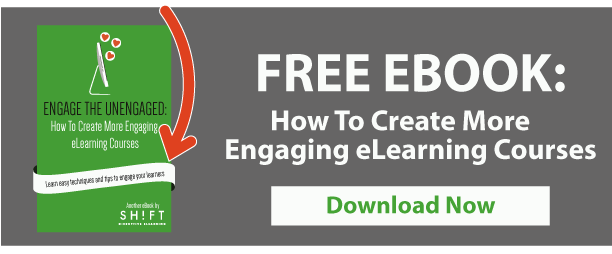 Successful marketing professionals work diligently to create the ideal customer persona knowing that a deep understanding of a client's needs will help them tailor their message to achieve their desired result. Effective classroom teachers also spend a great deal of time getting to know their students for the same reason, to tailor instruction to achieve proficiency.
Successful marketing professionals work diligently to create the ideal customer persona knowing that a deep understanding of a client's needs will help them tailor their message to achieve their desired result. Effective classroom teachers also spend a great deal of time getting to know their students for the same reason, to tailor instruction to achieve proficiency.
Effective eLearning courses take a cue from both marketers and classroom teachers by creating detailed learner personas. These in-depth descriptions and profiles of prototypical learners help course designers create more effective, more engaging and more educational content the learner can put to use immediately.
This cheat sheet can help an organization develop those personas to move instruction from mediocre to effective eLearning courses.

1. Gather Information
Information is power, and the most important first step in developing a learner persona is gathering information about specific learners. The final learner persona will reflect a hypothetical archetype, not an actual person. The information the persona is based on, however, should come from extensive interviews with sample audience members and supervisors, conducted by subject level experts.
The interview should ask questions about:
-
Basic demographics like age, family, and where they live;
-
What a typical day is like, particularly related to the relevant eLearning course;
-
The circumstances of their work environment including frustrations, relationships and skill level;
-
And needs the audience member has right now
2. Information Analysis
The end goal of the information collection is to develop a hypothetical, fully realized archetype of users, archetypes like early tech adopters, late comers or Luddites, that an eLearning course could be tailored for.
Analyzing the information from the interviews with audience members and supervisors should yield a selection of these archetypal personas with similar characteristics, habits behaviors, and needs. Look for trends in the information to yield a primary learner persona and one or two secondary personas as well.
3. Write the Persona
A strong leaner persona requires writing and development. A strong persona is a hypothetical person, with a name, backstory and specific character traits beyond the persona's job roles and duties in the workplace. Likely, a well-developed persona will be a few pages in length. It even helps to assign a picture to the persona to make the persona come more to life.
A persona should include:
- Behavior patterns;
- Goals, both long-term and short-term;
- Needs;
- Attitudes, beliefs and opinions;
- Skills
- And strong context and background information about those areas of the persona's life.
A fully developed persona will lead to more effective eLearning courses because the developers know who the audience is.
4. Use the Personas
Learner personas can't lead to more effective eLearning courses if they're not put to use. Everyone should start thinking for this learner. The persona should come into every conversation about course design as a member of the design team. What does the persona already know about this topic? What design elements will help the personal be successful in the course? Can they understand the language used?
Ready to rock!
The learner persona helps shift the eLearning design process away from what will best suit the business to a more learner-centered approach and what will best fit the learner. And when instruction is learner focused, the outcomes are far more effective for everyone.




